OpenSees Cloud
OpenSees AMI
Buckling of Restrained Plates
Original Post - 31 May 2025 - Michael H. Scott
Show your support at Buy Me a Coffee.
The plate buckling analysis in a previous post demonstrated flexural buckling–definitely minimal and definitely necessary if you’re going to tackle more complex cases of plate buckling.
Having passed the minimal example, Mark Denavit, a frequent collaborator, suggested I take a look at buckling of plates that are restrained on all four sides. Mark always has good suggestions for pushing OpenSees’ boundaries, including the parametric oscillator and eccentrically loaded bolt groups.
Mark pointed me to Yao and Fujikubo (2016), who provide analytical results for the buckling load of uniaxially loaded plates. The analyses considered four cases of plate boundary conditions:
- A - all sides simply-supported
- B - loaded sides clamped
- C - non-loaded sides clamped
- D - all sides clamped
The plate length, width, and thickness are L, h, and t,
respectively. An OpenSees model of the plate is a simple modification of
the model described in the minimal plate buckling post–all you need to
add is a couple of fixY commands for the boundary conditions on the
unloaded edges.
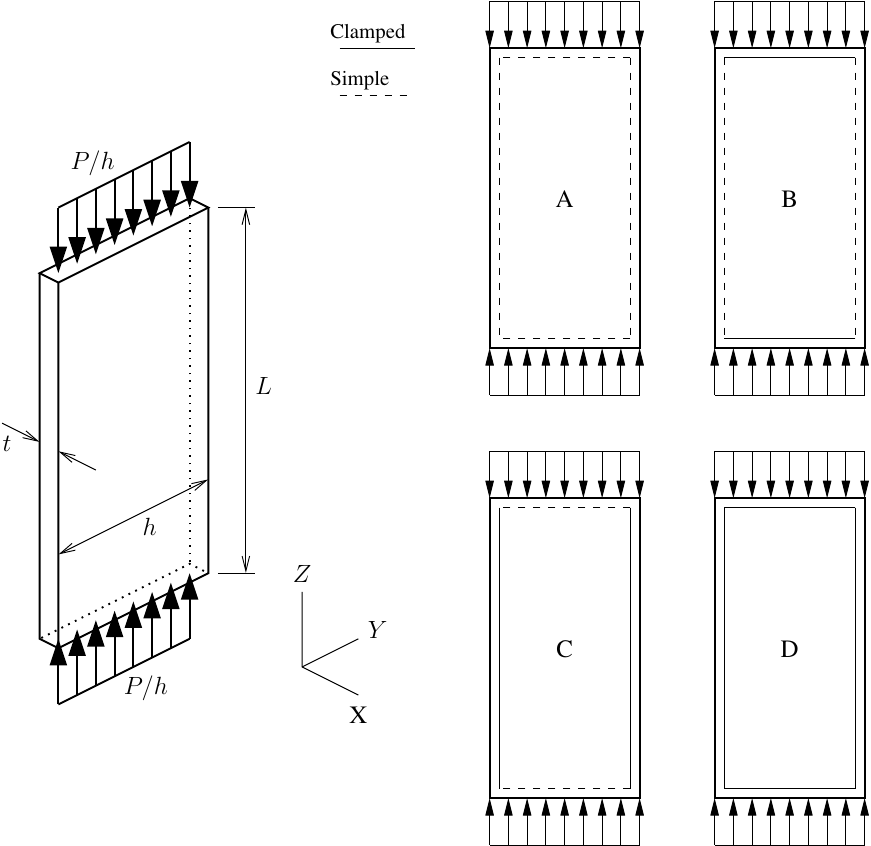
The plate’s elastic buckling stress is defined as the critical buckling load, Pcr, divided by the plate area, A=ht, normal to the loading direction
\[F_{cr} = \frac{P_{cr}}{A} = \frac{k\pi^2E}{12(1-\nu^2)} \left( \frac{t}{h} \right)^2\]where E and \(\nu\) are the elastic modulus and Poisson ratio of the plate. The buckling coefficient, k, depends on the plate aspect ratio and the edge boundary conditions.
To compute the buckling coefficient, we obtain the critical buckling load, Pcr, from OpenSees then normalize according to the buckling stress equation
\[k = \frac{P_{cr}}{A} \frac{12(1-\nu^2)}{\pi^2 E} \left( \frac{h}{t} \right)^2\]For each case of plate boundary conditions, the variation of k as a
function of plate aspect ratio is shown below. The OpenSees results for
the critical buckling load are obtained from a mesh of ShellNLDKGT
elements.

These results match the analytical solutions provided by Yao and Fujikobo–take a look at Figure 4.8 on this summary page. Minor discrepancies of the computed results for k with respect to the analytical solutions can be attributed to element formulation and mesh and load discretizations–but I will not lose sleep over these issues.
The buckled shape consists of half sine waves, the number of which increases with the plate aspect ratio and also depends on the plate boundary conditions as described by Yao and Fujikobo.
Below are the buckled shapes for aspect ratio L/h=2 and all four cases
of boundary conditions. The shapes are obtained by mapping the eigenvectors
from scipy back to the OpenSees model of shell elements, then plotting
with opsvis.
A - All sides simply-supported
Two half sine waves.
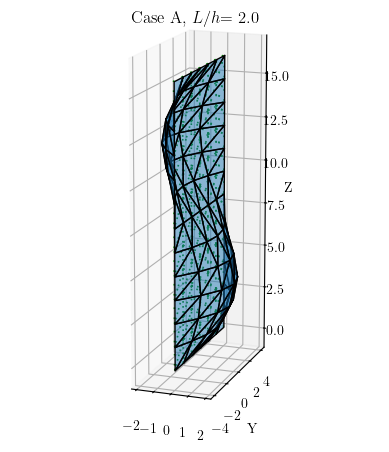
B - Loaded sides clamped
Two half sine waves.
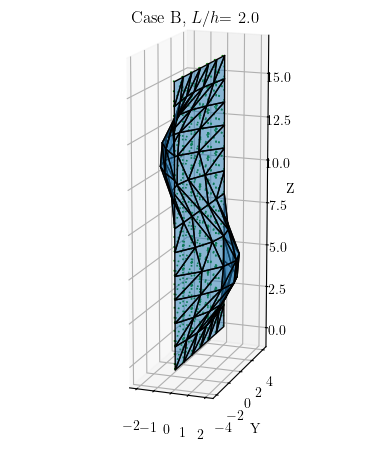
C - Non-loaded sides clamped
Three half sine waves.
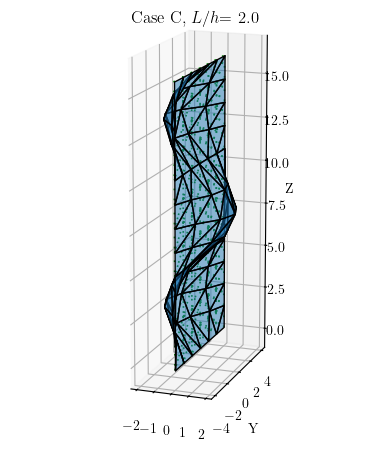
D - All sides clamped
Three half sine waves.
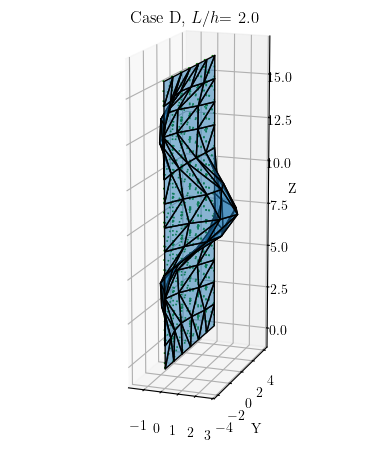
Which buckling problem should I try next with shell elements? LTB of a W- or C-shape?